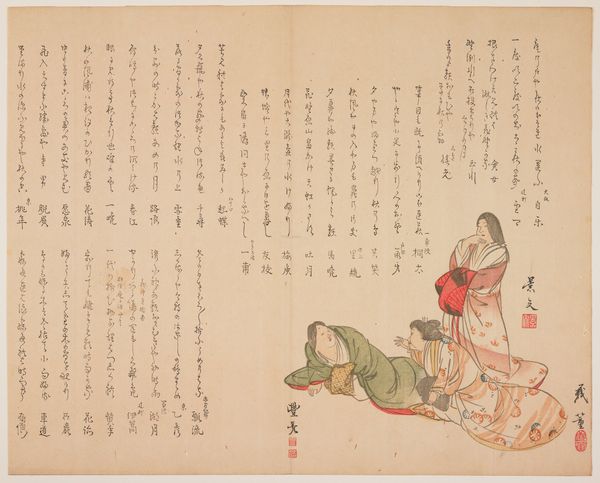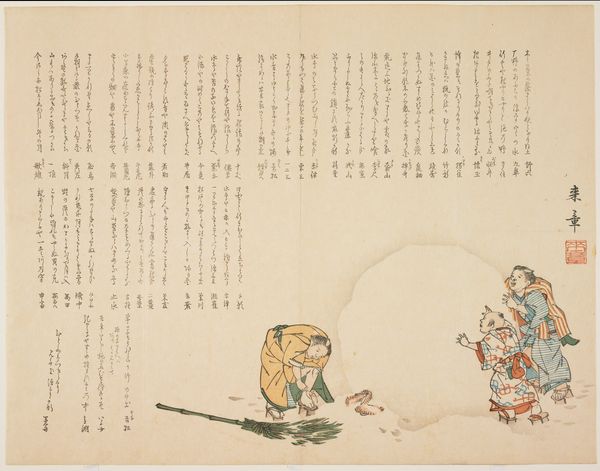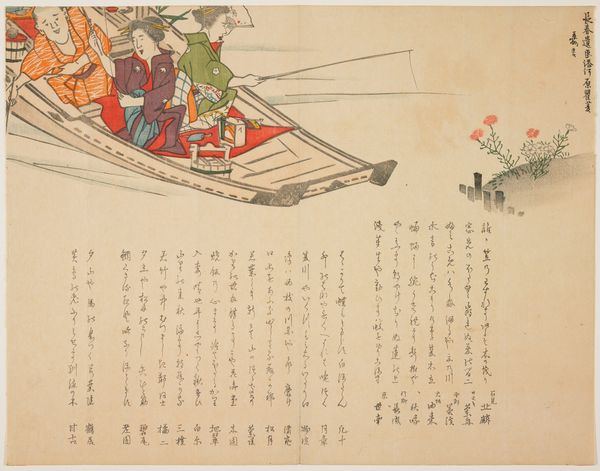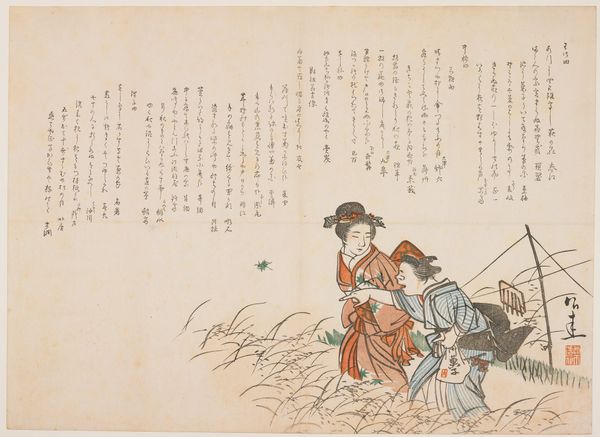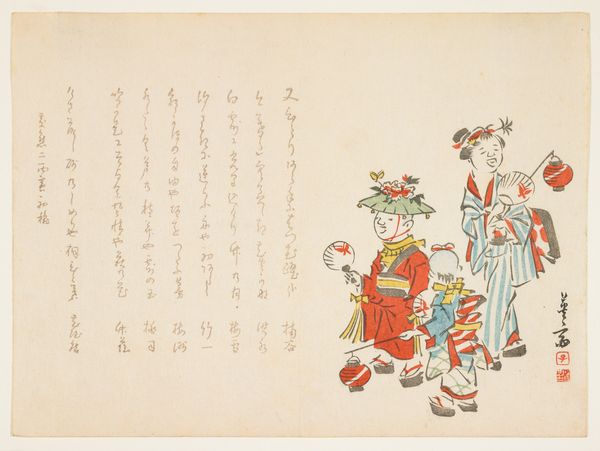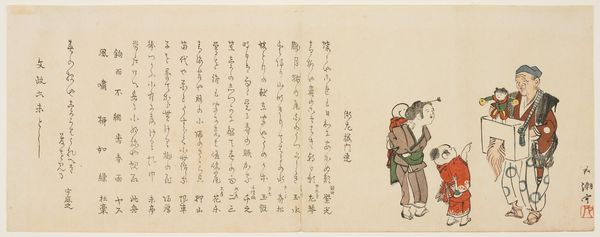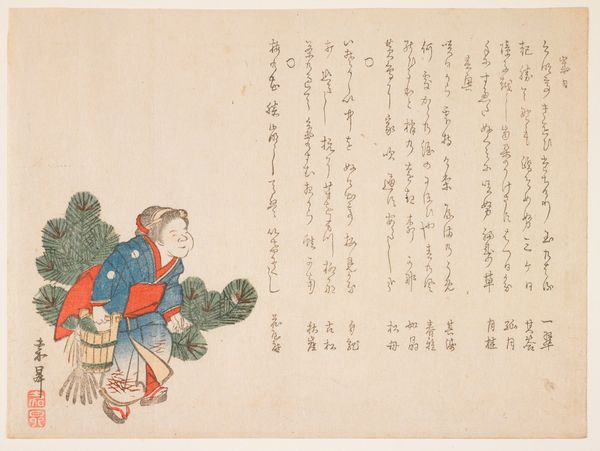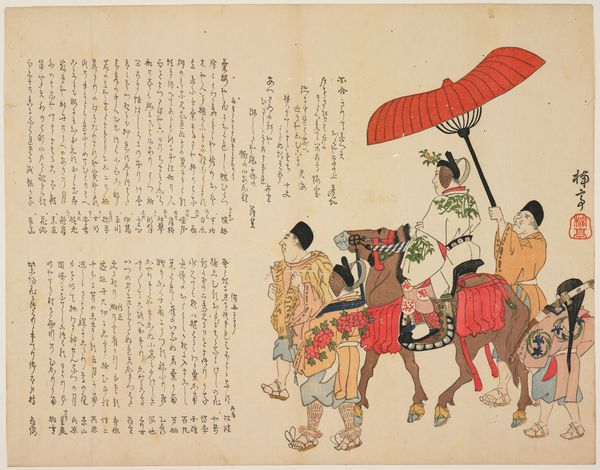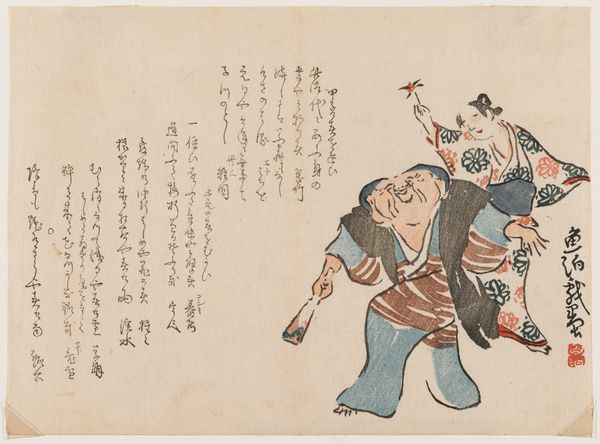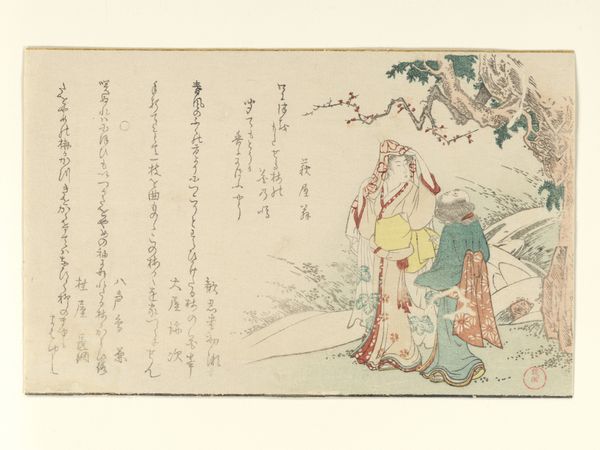
drawing, print, ink, woodblock-print
#
drawing
#
narrative-art
# print
#
asian-art
#
ukiyo-e
#
figuration
#
ink
#
woodblock-print
#
line
#
genre-painting
#
calligraphy
Dimensions: 15 x 19 1/4 in. (38.1 x 48.9 cm) (image, sheet)
Copyright: Public Domain
Curator: Welcome! Before us is "Kyokusui Poetry Party," a woodblock print by Nakamura Nagaharu, dating back to the 1810s, during the Edo period. This piece resides here at the Minneapolis Institute of Art. Editor: It looks like a beautiful mess! Not visually messy, but… complex. There's a delightful informality, almost playful quality to how figures and calligraphy jostle each other for space. Curator: The work depicts a kyokusui no en, or a 'winding stream party,' a traditional aristocratic game where participants compose poems and float cups of sake down a stream. When a cup nears them, they must compose and recite their poem before drinking. Editor: I love how the figures are caught in these small narrative vignettes, half-buried by all that looping text! Like visual echoes. The guys perched in the branches feel precariously poised, a light-heartedness runs all through the drawing. Does the text relate directly to the party, like records of these poetic games? Curator: Exactly. Calligraphy was as much a part of elite social gatherings as poetry and fine art. The text includes the poems produced during such gatherings. In Ukiyo-e prints, such as these, we can observe that popular themes include narrative art or genre painting, offering a view into a cultural happening or pastime. Editor: It’s so striking how seamlessly the script is integrated – visually, not just narratively. Often text in art feels added on, or explanatory. This is integrated, dynamic! Curator: In the 19th century, woodblock printing offered greater access to this form of art and contributed significantly to literary culture in Japan. Prints like these became cultural objects and historical records, showcasing social practices in early-19th-century Japan. Editor: Looking at it now, I’m struck by how radical the composition must have seemed back then. It defies every expectation, pushing figuration right to the periphery. I find something eternally compelling about these kinds of unconventional aesthetics. Curator: Absolutely. By presenting quotidian activities through the aesthetics and visual tropes common to elite artworks and artistic patronage, it creates an interesting intersection of tradition, practice, and social hierarchies. Editor: Yes, and that disruption, that slight tilt of perspective... that’s often where true creativity begins. Thank you! Curator: A fascinating view into a unique, and fleeting, moment.
Comments
minneapolisinstituteofart almost 2 years ago
⋮
This print depicts a "meandering stream party" (kyokusui no en). In ancient China, parties were sometimes held along the banks of narrow streams. Cups filled with wine were floated down the stream. Participants were required to compose poems before the cups passed by. Those who failed to do so were required to drink a cup of wine. In this print, three people in the lower left are the guests. The man seated between the two women is hurriedly re-reading his poem as a small wine cup approaches. In the upper right, a young boy diligently places cups into the stream. The man seated next to him resembles Fukusuke, a big-headed doll that is associated with a good luck and a business success.
Join the conversation
Join millions of artists and users on Artera today and experience the ultimate creative platform.
